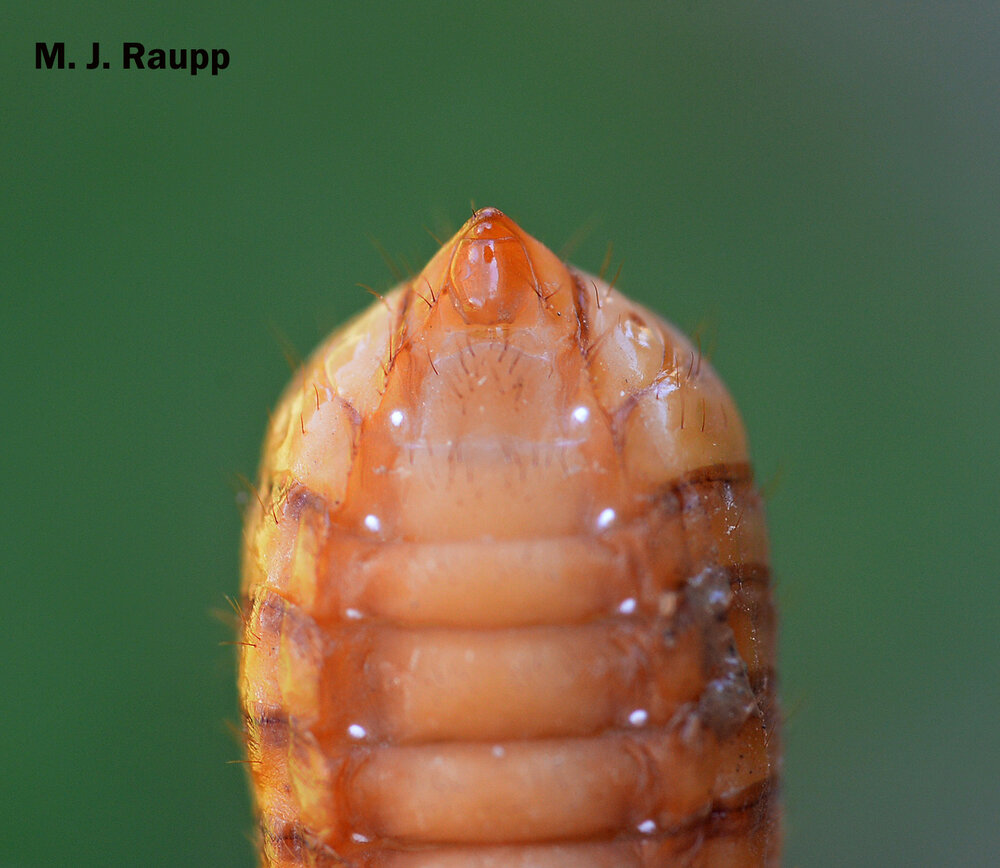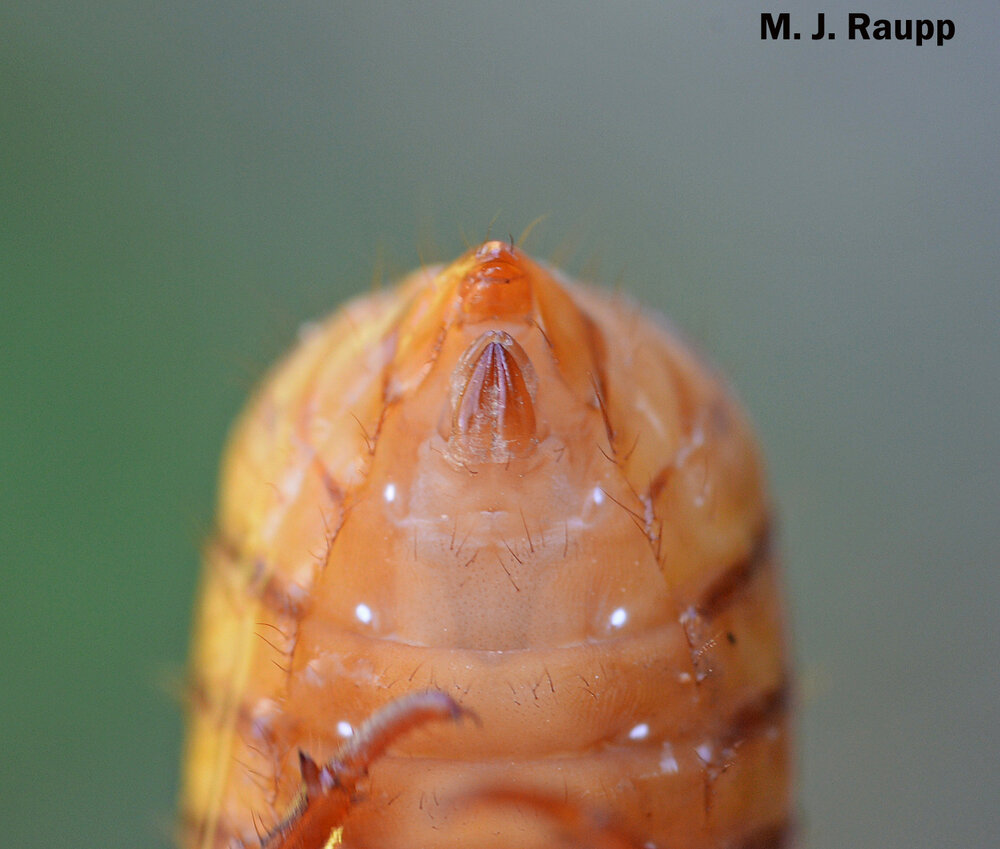Just a trickle, not a flood, so when will the main event happen? And how do you tell the guys from the gals? Periodical Cicadas, Magicicada spp.

Shed skins beneath a tree are the sure sign of adult cicadas in the treetop.
In last week’s episode, we heard about the arrival of Brood X periodical cicadas in the deep South, Georgia, North Carolina, and Tennessee, where cicada adults are up and out of the ground and ushering in the main event in this region. This week we also viewed some great video of emerging cicada nymphs in northern Virginia near Tysons Corner. As an alum and emeritus of the University of Maryland, I was particularly intrigued by a reported sighting of periodical cicadas made by several Terp students on April 27th near our iconic Memorial Chapel. On the eve of Tuesday May 4, following a day of near record temperatures in the 80s punctuated by rain showers, a cicada safari seemed in order. High temperatures and the high relative humidity that follows a late afternoon storm are often the perfect conditions to trigger emergence of cicadas. After searching dozens of stately oaks near the chapel, around 10 pm I was rewarded with the discovery of cicada nymphs rising from their subterranean crypts after 17 years, and ascending a nearby willow oak. Not exactly the flood I was hoping for, but the gentle trickle of cicadas provided a pleasant ending to the safari. This week has seen a deluge of journalists and cicada enthusiasts hoping to witness the upcoming cicada tsunami in the DMV but, alas, Mother Nature is teasing us. With daily high temperatures forecast to be in the 60’s and several cloudy and showery days scheduled for the upcoming week, it looks like the massive emergence here in the DMV – the cicadapalooza – will be delayed just a bit. As my meteorologist friends assure me, this could all turn around quickly with a blast of warm, humid air from the south. Let’s keep our fingers crossed.
Cicada safaris often begin at dusk and stretch into the dead of night. At the base of a veteran oak tree, shed skins of cicadas provide a clue that the big jailbreak is near. As weather warms over the next several weeks, a cicada trickle becomes a cicada tsunami.
Another curious event happened this week while visiting a few cicada nymphs beneath the earth with a film crew from the BBC. The question arose about gender identity of cicadas, and was it possible to tell the guys from the gals. As with many sexually reproducing organisms on earth, the equipment for mating is fundamentally different between males and females. After unearthing several fifth instar Magicicada nymphs and examining their rear ends, it was easy to resolve this query. The male nymph bears a singular slightly enlarged bump at the tip of his abdomen, that when fully developed in the adult stage will be his intromittent organ, called an aedeagus. The nymphs destined to be a female have two darker triangularly shaped structures at the tip of their abdomen that will house the ovipositor of the female. The ovipositor is the appendage used to slit pencil sized branches and insert eggs into egg nests. Images of the abdomens of males and females are provided here to help clarify the difference between the sexes. For adult cicadas, it is easier to tell the guys from the gals.
When warm weather returns, be on the lookout for adult cicadas and be sure to use the appropriate gender designation for the males and females when you greet them.

When viewed from beneath, male cicada nymphs have a small bump near the tip of their abdomen.

When viewed from beneath, female cicada nymphs have two dark triangular structures along the midline of the body near the tip of the abdomen.
Acknowledgements
Bug of the Week thanks Billy, Stephen, and Mike and the BBC for providing inspiration for this episode. Thanks also to Richard Scott Rupert and the entire crew of the Arboretum, Botanical Gardens, and Landscape Services at the University of Maryland. Thanks also to Colette, Virginia, and Trinadee who discovered the magical oak that spawned these early rising cicadas at the University of Maryland.
To keep current on what’s up with the 2021 Brood X cicada emergence in the DMV, check in with the Cicada Crew at the University of Maryland.
This post appeared first on Bug of the Week